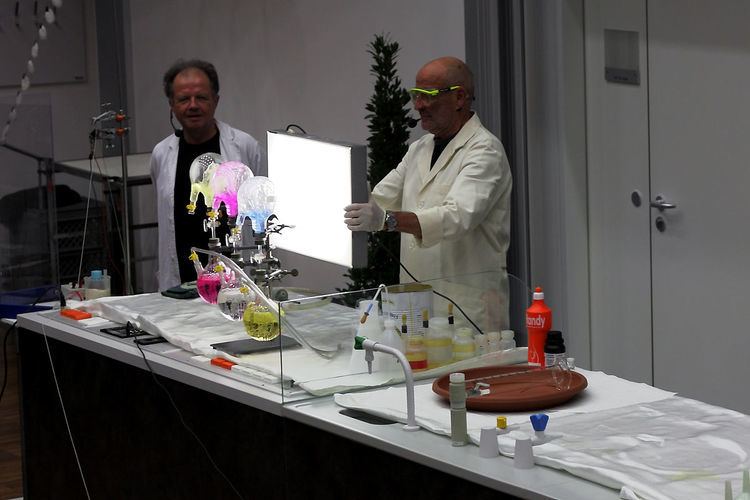 | ||
The ammonia fountain is a type of chemical demonstration. The experiment consists of introducing water through an inlet to a container filled with ammonia gas. Ammonia dissolves into the water and the pressure in the container drops. As a result, more water is forced into the container from another inlet creating a fountain effect. The demonstration introduces concepts like solubility and the gas laws at entry level.
A different gas of comparable solubility in water, such as hydrogen chloride, can be used instead of ammonia.
If the ammonia is replaced by a liquid vapor, such as water vapor, at a pressure higher than its room-temperature vapor pressure, a similar effect is produced. In this case, the reduction in pressure in the container is due to condensation of the vapor as the container cools to room temperature.
